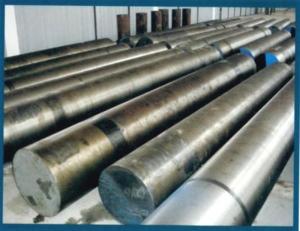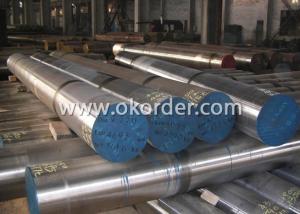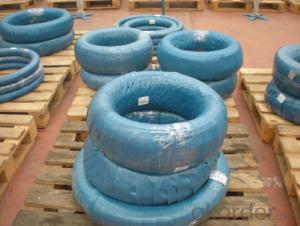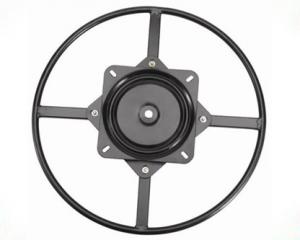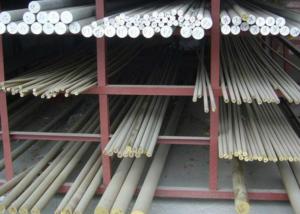Hot Rolled Mild Steel Plate Carbon Steel Sheet
- Loading Port:
- China main port
- Payment Terms:
- TT OR LC
- Min Order Qty:
- 30 m.t.
- Supply Capability:
- 10000 m.t./month
OKorder Service Pledge
OKorder Financial Service
You Might Also Like
Item specifice
Product Information
Item | Steel sheet,steel plate,mild steel sheet,carbon steel sheet |
Standard | ASTM A285, ASTM A283, SA516, SA517, EN10025-2-2004, ASTM A572, ASTM A529, |
Material | A36,SS400,A283 Gr.A,.Gr.B.Gr.C,A285 Gr.A,.Gr.B.Gr.C,Q235,Q195,Q215,S185,SM400, |
Size | Thickness:2.0-200mm |
Surface | Black painted,PE coated,Galvanized ,etc |
Export to | Iran,India,Dubai,Peru,Saudi Arabia,Indonesia,Singapore,Korea,Viet Nam,Thailand,Brazil, |
Application | Steel plates are widly used as boiler plate, container plate, flange plate and ship plate, and |
Contact | If you have any question ,please feel free to contact me . |
Product Show

Workshop Show

Shipping
1. FedEx/DHL/UPS/TNT for samples, Door-to-Door;
2. By Air or by Sea for batch goods, for FCL; Airport/ Port receiving;
3. Customers specifying freight forwarders or negotiable shipping methods!
Delivery Time: 3-7 days for samples; 5-25 days for batch goods.
Payment Terms
1.Payment: T/T, L/C, Western Union, MoneyGram,PayPal; 30% deposits; 70% balance before delivery.
2.MOQ: 1pcs
3.Warranty : 3 years
4.Package Informations: 1) EXPORT, In 20 feet (GW 25 ton) or 40 feet Container (GW 25 ton)
2)as customer's requirement
Why choose us?
(1) The leading exporter in China special steel industry.
(2) Large stocks for various sizes, fast delivery date.
(3) Good business relationship with China famous factories.
(4) More than 7 years steel exporting experience.
(5) Good after-sales service guarantee.
- Q:How is shock-resistant steel used in the production of impact tools?
- Shock-resistant steel is used in the production of impact tools due to its exceptional ability to withstand high impact forces without deforming or breaking. This steel is specifically designed to absorb and distribute the energy generated during impacts, making it an ideal material for tools such as hammers, wrenches, and chisels. By using shock-resistant steel, manufacturers ensure that their impact tools can endure rigorous use and provide reliable performance, even in demanding applications.
- Q:How does special steel perform in medical applications?
- Special steel performs exceptionally well in medical applications due to its unique properties. It offers high strength, durability, and corrosion resistance, making it ideal for surgical instruments, implants, and medical devices. Special steel's biocompatibility ensures it doesn't react with body tissues, reducing the risk of complications or adverse reactions. Additionally, its malleability allows for precise shaping, facilitating the production of complex medical tools. Overall, special steel contributes to the efficiency and reliability of medical procedures, improving patient outcomes.
- Q:Can special steel be used in medical applications?
- Yes, special steel can be used in medical applications. Special steel alloys, such as stainless steel, are commonly used in the production of surgical instruments, orthopedic implants, and medical devices due to their excellent corrosion resistance, durability, and biocompatibility properties.
- Q:What is the purpose of cold drawing in special steel production?
- The purpose of cold drawing in special steel production is to improve the mechanical properties and dimensional accuracy of the steel. Cold drawing involves pulling the steel through a die at room temperature, which reduces the cross-sectional area and increases the length of the steel. This process helps to refine the microstructure of the steel, resulting in improved strength, hardness, and toughness. Additionally, cold drawing can enhance the surface finish and straightness of the steel, ensuring precise dimensions and making it suitable for various applications where high-quality steel is required. Overall, cold drawing plays a crucial role in enhancing the performance and quality of special steel, making it more reliable and efficient in various industrial sectors.
- Q:What is the importance of heat treatment in special steel?
- The significance of heat treatment in special steel cannot be emphasized enough as it greatly enhances its mechanical properties and overall performance. Special steel, also known as alloy steel, is specifically engineered to possess certain characteristics such as high strength, hardness, wear resistance, and toughness, making it suitable for challenging applications in industries like automotive, aerospace, and tooling. The process of heat treatment involves controlled heating and cooling of the steel in order to modify its microstructure, which subsequently impacts its properties. There are various heat treatment techniques employed, including annealing, tempering, quenching, and hardening, each serving a distinct purpose. One crucial aspect of heat treatment in special steel is its ability to enhance hardness. Through techniques like quenching and hardening, the steel can be transformed into a hardened state, making it significantly stronger and more resistant to abrasion and wear. This is of utmost importance for applications involving heavy loads, impact, and abrasive environments. Furthermore, heat treatment can also enhance the toughness and ductility of special steel. By precisely controlling the cooling rate during the heat treatment process, the microstructure of the steel can be adjusted to achieve a fine-grained structure, thereby improving its ability to withstand sudden impacts or shocks. This is particularly critical in applications where the material needs to absorb energy and resist fractures, such as in structural components or tools. Moreover, heat treatment can also improve the machinability and dimensional stability of special steel. By subjecting the steel to annealing or tempering processes, internal stresses and residual strains can be relieved, resulting in a more stable and easier-to-machine material. This is indispensable in industries where precision and dimensional accuracy are of utmost importance. In conclusion, the significance of heat treatment in special steel cannot be overstated. It is a vital process that enables the optimization of the steel's mechanical properties, ensuring that it fulfills the specific requirements of demanding applications. By skillfully manipulating the microstructure, heat treatment enhances the steel's hardness, toughness, and machinability, making it a versatile and dependable material in various industries.
- Q:What are the different methods for improving the corrosion resistance of special steel?
- There are multiple techniques available to enhance the corrosion resistance of special steel. 1. Alloying: Adding alloying elements, like chromium, nickel, and molybdenum, to the steel composition is a widely used method. These elements create a protective layer on the steel surface, preventing corrosion. For instance, stainless steel contains a substantial amount of chromium, which forms a passive film that shields the steel from corrosive surroundings. 2. Surface treatments: Diverse surface treatments can be applied to special steel to augment its corrosion resistance. These treatments include electroplating, hot-dip galvanizing, and chemical passivation. Electroplating involves coating the steel with a layer of zinc or nickel, serving as a sacrificial anode that safeguards the steel from corrosion. Hot-dip galvanizing entails immersing the steel in molten zinc to form a durable and corrosion-resistant layer. Chemical passivation involves treating the steel with a solution that eliminates surface impurities and forms a protective oxide layer. 3. Protective coatings: The application of protective coatings can considerably enhance the corrosion resistance of special steel. Coatings like paint, epoxy, or polyurethane act as barriers, preventing moisture and corrosive substances from contacting the steel surface. These coatings can be applied through spray, dip, or powder coating methods. 4. Heat treatment: Modifying the microstructure of special steel through heat treatment improves its corrosion resistance. Processes like annealing, quenching, and tempering can alter the steel's properties, making it more resistant to corrosion. Heat treatment can also alleviate internal stresses that contribute to corrosion. 5. Environmental control: Controlling the environment in which the special steel is utilized can also aid in improving its corrosion resistance. This includes maintaining appropriate humidity levels, controlling pH, avoiding exposure to corrosive chemicals, and implementing effective ventilation systems. By minimizing the exposure of special steel to corrosive elements, its corrosion resistance can be enhanced. In conclusion, a combination of these methods can be employed to enhance the corrosion resistance of special steel, ensuring its durability and performance in corrosive environments.
- Q:How does special steel perform in high-pressure hydrogen environments?
- Special steel performs well in high-pressure hydrogen environments due to its high strength, corrosion resistance, and ability to withstand hydrogen embrittlement. It offers reliable performance and minimizes the risk of hydrogen-induced failures, making it a suitable choice for applications such as hydrogen storage, transportation, and fuel cells.
- Q:How does special steel contribute to the automotive aftermarket industry?
- Special steel plays a crucial role in the automotive aftermarket industry as it offers enhanced strength, durability, and corrosion resistance compared to regular steel. This allows manufacturers to produce high-performance components such as engine parts, chassis components, and suspension systems. Additionally, special steel's unique properties enable the creation of lighter and more fuel-efficient vehicles. Its contribution to the aftermarket industry lies in providing the necessary materials for the production of high-quality and long-lasting aftermarket parts that meet the demands of vehicle customization and performance upgrades.
- Q:How is structural steel used in building construction?
- Structural steel is extensively used in building construction due to its high strength and versatility. It serves as the primary framework for buildings, providing support and stability. The steel beams and columns are used to create the skeleton of the structure, spanning large distances and allowing for open floor plans. Additionally, steel is used for various other elements such as stairs, handrails, and roof trusses. Its durability, fire resistance, and ability to withstand extreme weather conditions make it an ideal material for constructing high-rise buildings, industrial facilities, and bridges.
- Q:What are the requirements for special steel used in mining equipment?
- The mining industry imposes strict standards on the special steel required for mining equipment due to its challenging nature. Here are some of the essential criteria: 1. Strength and toughness: The mining equipment operates in harsh conditions, enduring heavy loads, impacts, and abrasion. The special steel must possess high strength to withstand these forces and maintain its structural integrity. Additionally, it should exhibit exceptional toughness to prevent fractures and withstand sudden shocks. 2. Resistance to corrosion: Mining operations often occur in corrosive environments, such as underground mines or near water bodies. The special steel utilized in mining equipment should display remarkable resistance to corrosion and oxidation to ensure its durability and prevent premature failure. 3. Resistance to wear: Mining equipment is exposed to abrasive substances, like rocks and minerals, which can cause significant wear. The special steel employed in mining equipment should possess excellent wear resistance properties to endure continuous abrasion and prevent premature deterioration. 4. Heat resistance: The mining equipment frequently experiences high temperatures due to friction during operation or proximity to heat sources. The special steel used in mining equipment should exhibit good heat resistance to retain its mechanical properties and avoid deformation or structural failure. 5. Fatigue resistance: Mining equipment undergoes repetitive and cyclic loading, which can lead to fatigue failure over time. The special steel utilized in mining equipment should possess high fatigue resistance to prevent cracking or failure under these cyclic loading conditions. 6. Weldability and machinability: The special steel employed in mining equipment should have favorable weldability and machinability to facilitate the fabrication and assembly processes. This ensures that the equipment can be easily manufactured, repaired, or modified as necessary. 7. Compliance with regulations: Mining equipment often needs to meet specific regulatory standards and certifications to ensure safety and environmental compliance. The special steel used in mining equipment should adhere to these regulations, guaranteeing the equipment's safe operation and absence of environmental hazards. In conclusion, the requirements for special steel used in mining equipment encompass high strength and toughness, corrosion resistance, wear resistance, heat resistance, fatigue resistance, weldability and machinability, and compliance with regulatory standards. These requirements ensure that the steel can endure the harsh conditions and demanding operations encountered in the mining industry.
1. Manufacturer Overview |
|
|---|---|
| Location | |
| Year Established | |
| Annual Output Value | |
| Main Markets | |
| Company Certifications | |
2. Manufacturer Certificates |
|
|---|---|
| a) Certification Name | |
| Range | |
| Reference | |
| Validity Period | |
3. Manufacturer Capability |
|
|---|---|
| a)Trade Capacity | |
| Nearest Port | |
| Export Percentage | |
| No.of Employees in Trade Department | |
| Language Spoken: | |
| b)Factory Information | |
| Factory Size: | |
| No. of Production Lines | |
| Contract Manufacturing | |
| Product Price Range | |
Send your message to us
Hot Rolled Mild Steel Plate Carbon Steel Sheet
- Loading Port:
- China main port
- Payment Terms:
- TT OR LC
- Min Order Qty:
- 30 m.t.
- Supply Capability:
- 10000 m.t./month
OKorder Service Pledge
OKorder Financial Service
Similar products
New products
Hot products
Related keywords























